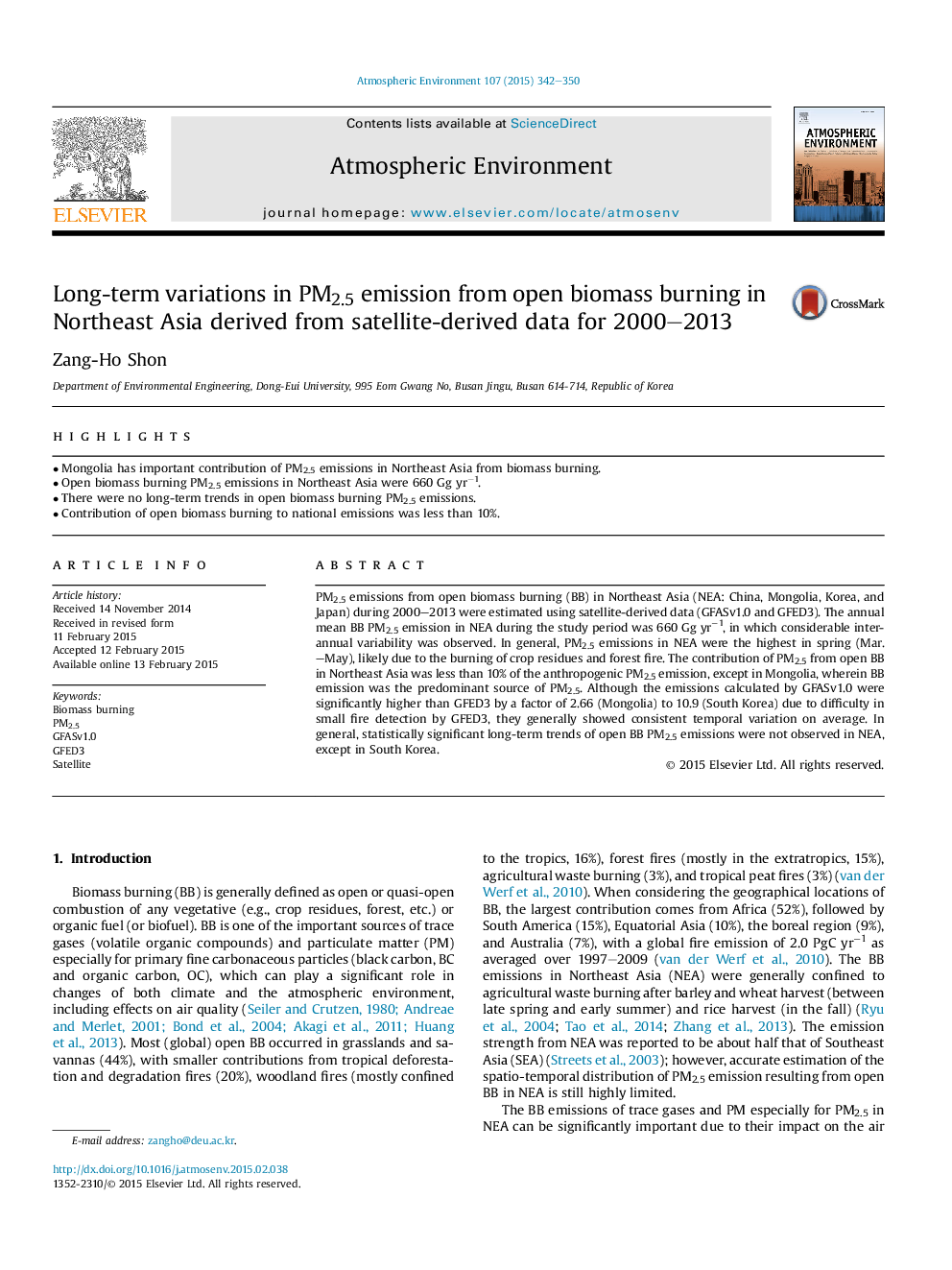| Article ID | Journal | Published Year | Pages | File Type |
|---|---|---|---|---|
| 6338462 | Atmospheric Environment | 2015 | 9 Pages |
Abstract
PM2.5 emissions from open biomass burning (BB) in Northeast Asia (NEA: China, Mongolia, Korea, and Japan) during 2000-2013 were estimated using satellite-derived data (GFASv1.0 and GFED3). The annual mean BB PM2.5 emission in NEA during the study period was 660 Gg yrâ1, in which considerable inter-annual variability was observed. In general, PM2.5 emissions in NEA were the highest in spring (Mar.-May), likely due to the burning of crop residues and forest fire. The contribution of PM2.5 from open BB in Northeast Asia was less than 10% of the anthropogenic PM2.5 emission, except in Mongolia, wherein BB emission was the predominant source of PM2.5. Although the emissions calculated by GFASv1.0 were significantly higher than GFED3 by a factor of 2.66 (Mongolia) to 10.9 (South Korea) due to difficulty in small fire detection by GFED3, they generally showed consistent temporal variation on average. In general, statistically significant long-term trends of open BB PM2.5 emissions were not observed in NEA, except in South Korea.
Keywords
Related Topics
Physical Sciences and Engineering
Earth and Planetary Sciences
Atmospheric Science
Authors
Zang-Ho Shon,
